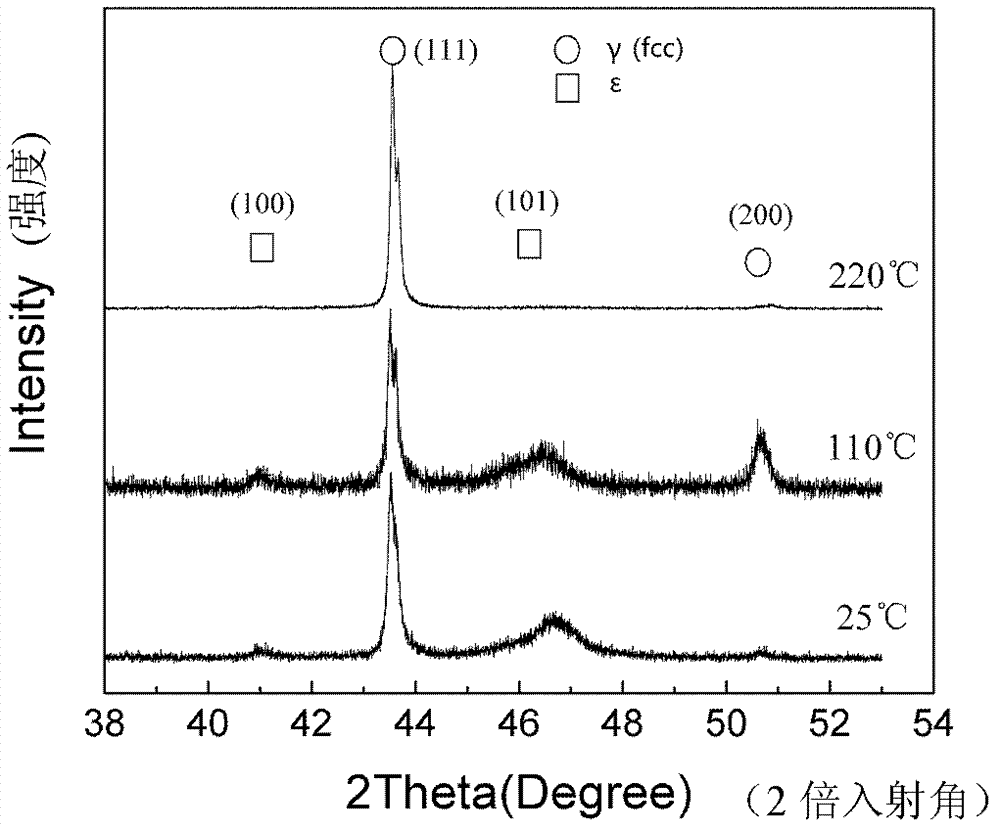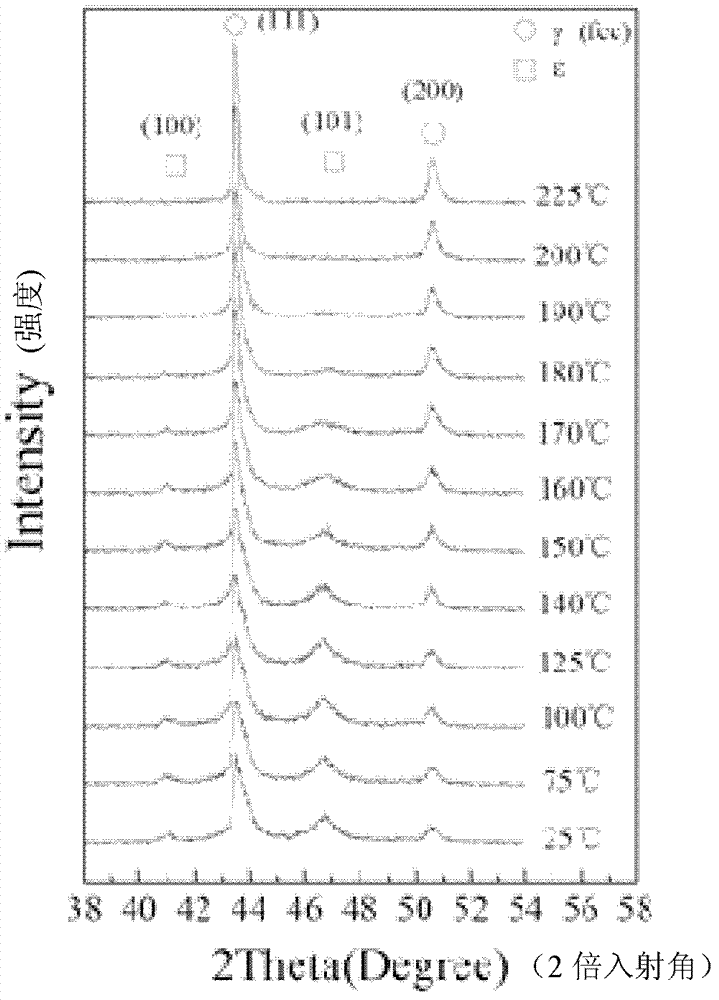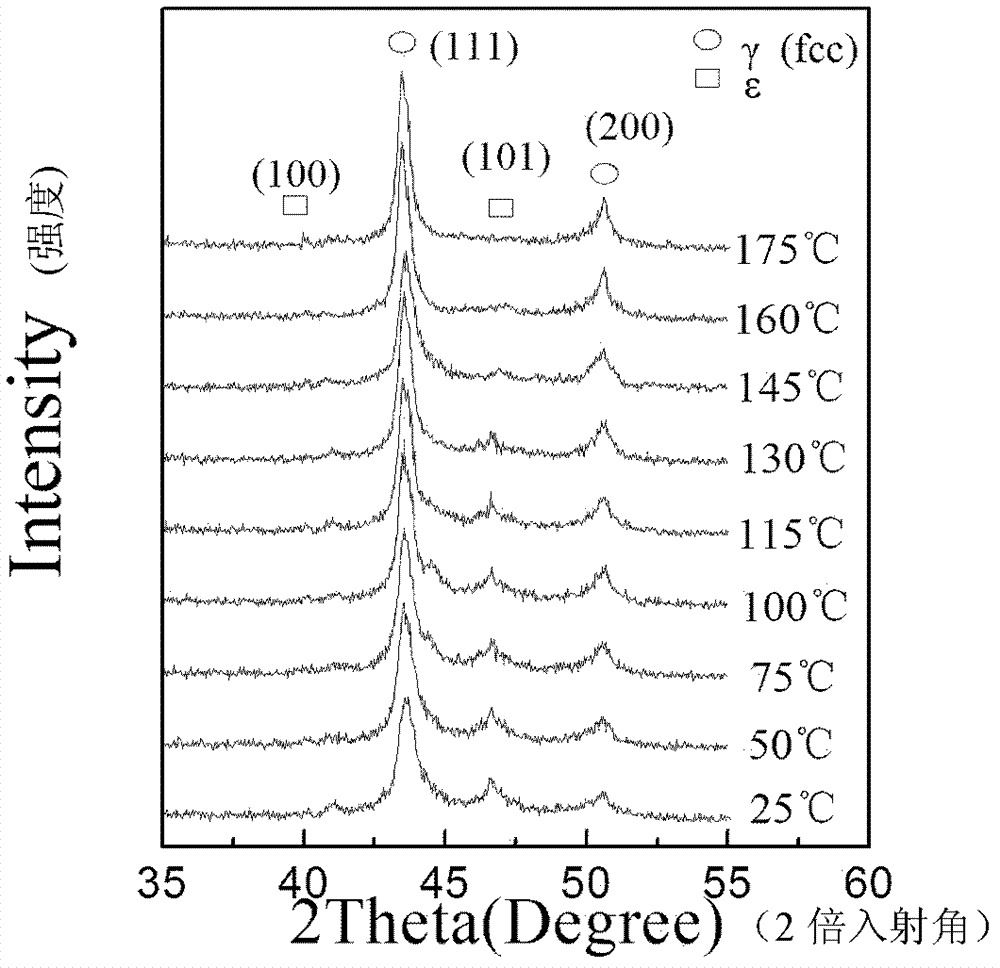Method for representing recovery characteristics of Fe-Mn-Si-based memory alloy by in-situ X-ray diffraction
A technology of fe-mn-si and memory alloy, which is applied in the direction of material analysis using radiation diffraction and the preparation of test samples, can solve problems such as difficult macroscopic angles, difficult dynamic analysis, and complicated sample preparation, and achieves Effect of reducing measurement error
- Summary
- Abstract
- Description
- Claims
- Application Information
AI Technical Summary
Problems solved by technology
Method used
Image
Examples
Embodiment 1
[0028] Embodiment 1: Taking the composition as an example of Fe-15Mn-6Si-9Cr-4Ni-0.5V-0.16N-based memory alloy, that is, the Fe-Mn-Si-based memory alloy contains 15% by weight of Mn, 6% of Si, 9% Cr, 4% Ni, 0.5% V, 0.16% N, and the rest is Fe.
[0029] First preprocess:
[0030] (1) Melting and solution treatment: alloy ingots were smelted in a vacuum induction furnace, forged after homogenization treatment at 1200°C for 5 hours, and then hot-rolled at 1000°C into 20mm thick plates. The hot-rolled plate was subjected to solution treatment at 1150°C for 5 hours, so that the second phase forming elements could fully dissolve back, and a sample with uniform composition and structure was obtained.
[0031] (2) Wire cutting and aging treatment: The solid solution treated sample is subjected to wire cutting treatment to obtain a sample with a size of 8mm×50mm×0.7mm, and the wire cutting emulsified oil remaining on the surface of the sample is removed through chemical degreasing. T...
Embodiment 2
[0040] Example 2: Take the Fe-15Mn-6Si-9Cr-4Ni-0.7V-0.2C-based memory alloy as an example, that is, the Fe-Mn-Si-based memory alloy contains 15% Mn by weight, 6% Si, 9% Cr, 4% Ni, 0.7% V, 0.2% C, and the rest is Fe.
[0041] First preprocess:
[0042] (1) Melting and solid solution treatment: the process is the same as that in the above-mentioned embodiment 1.
[0043] (2) Wire cutting and aging treatment: The difference between this process and the above-mentioned Example 1 is only the final holding temperature and time, that is, the sample is finally kept in a resistance furnace at 750°C for 2 hours, and the aging treatment is obtained after water quenching. sample.
[0044] (3) Surface treatment: the process is the same as that in the first embodiment above.
[0045] (4) Stretching treatment: This process is the same as that in the above-mentioned Example 1.
[0046] (5) The 10% stretched Fe-17Mn-5Si-10Cr-5Ni-0.7V-0.2C was processed by the TC-widerange high-temperature ...
PUM
 Login to View More
Login to View More Abstract
Description
Claims
Application Information
 Login to View More
Login to View More - R&D
- Intellectual Property
- Life Sciences
- Materials
- Tech Scout
- Unparalleled Data Quality
- Higher Quality Content
- 60% Fewer Hallucinations
Browse by: Latest US Patents, China's latest patents, Technical Efficacy Thesaurus, Application Domain, Technology Topic, Popular Technical Reports.
© 2025 PatSnap. All rights reserved.Legal|Privacy policy|Modern Slavery Act Transparency Statement|Sitemap|About US| Contact US: help@patsnap.com



